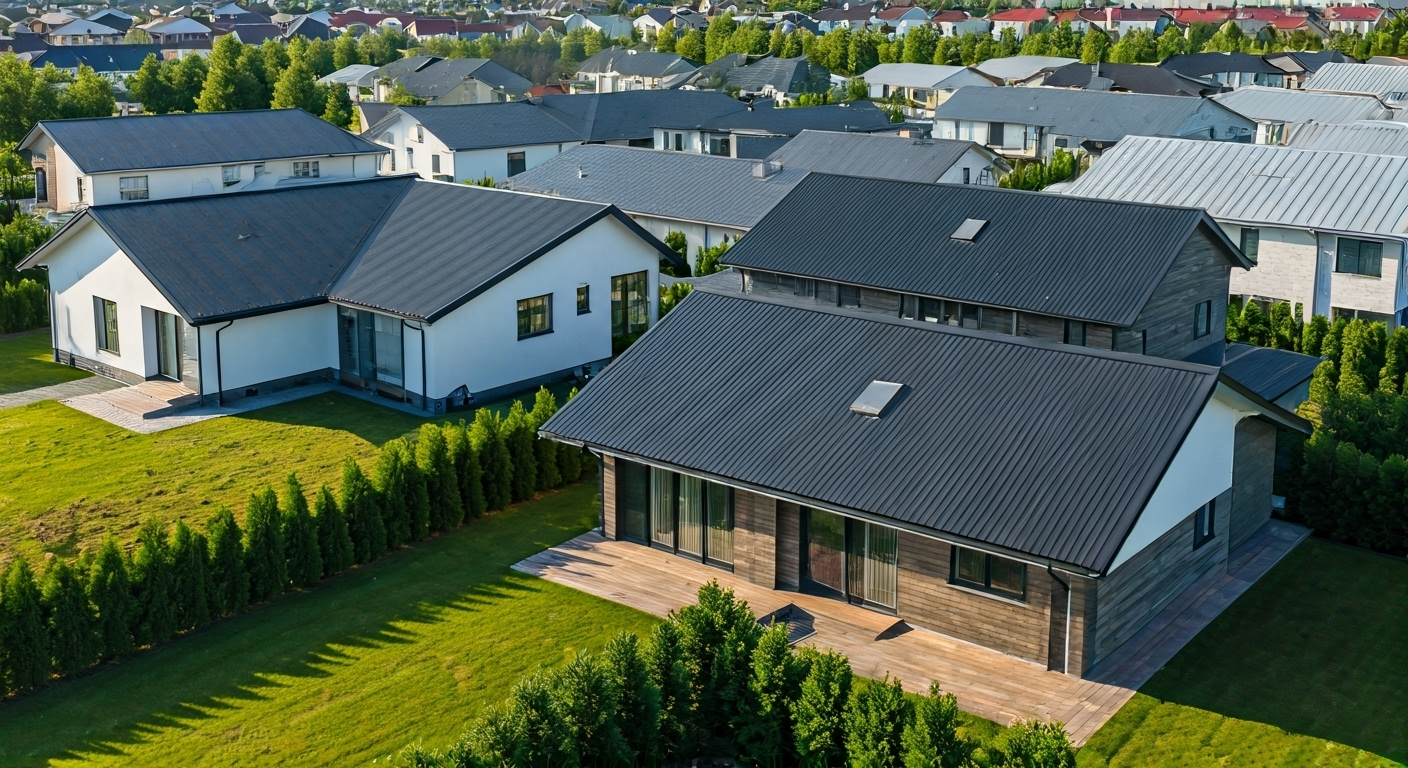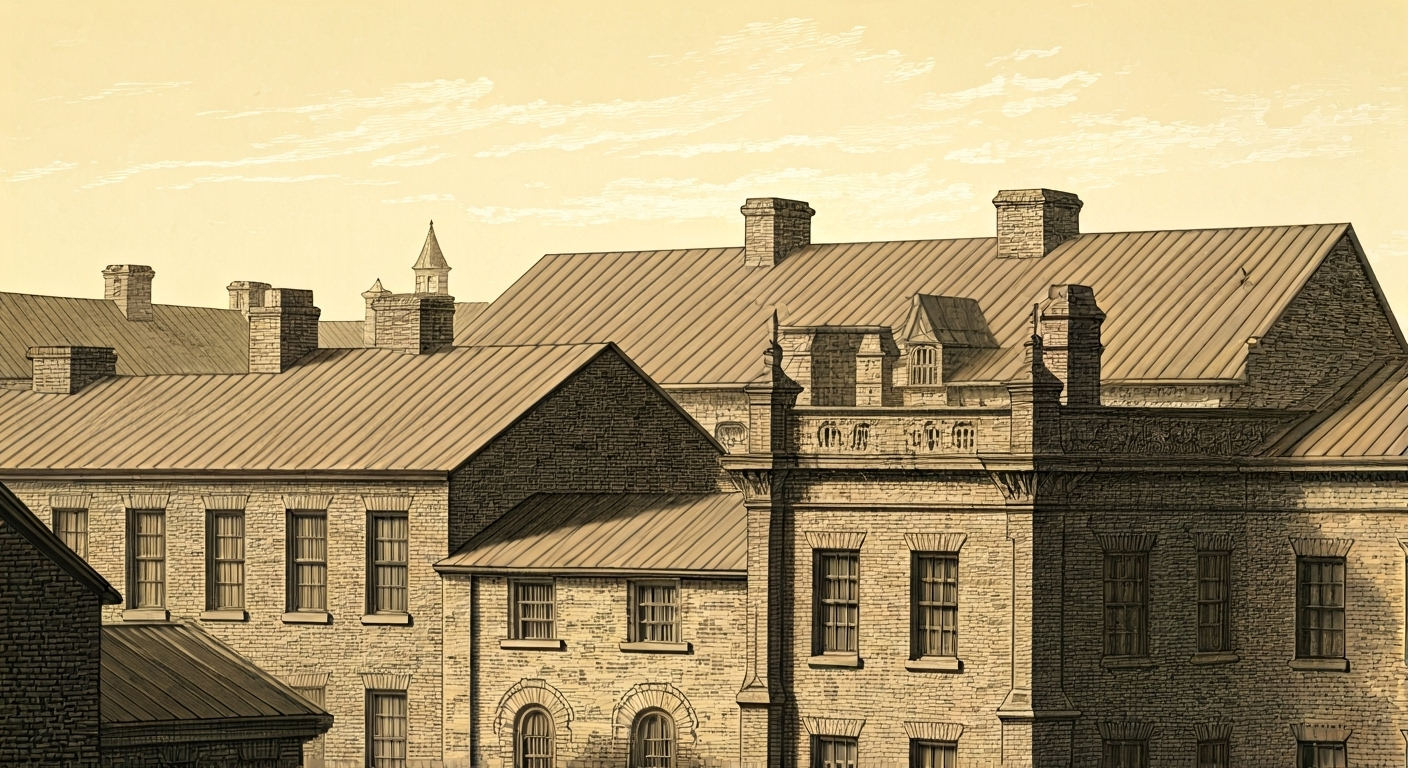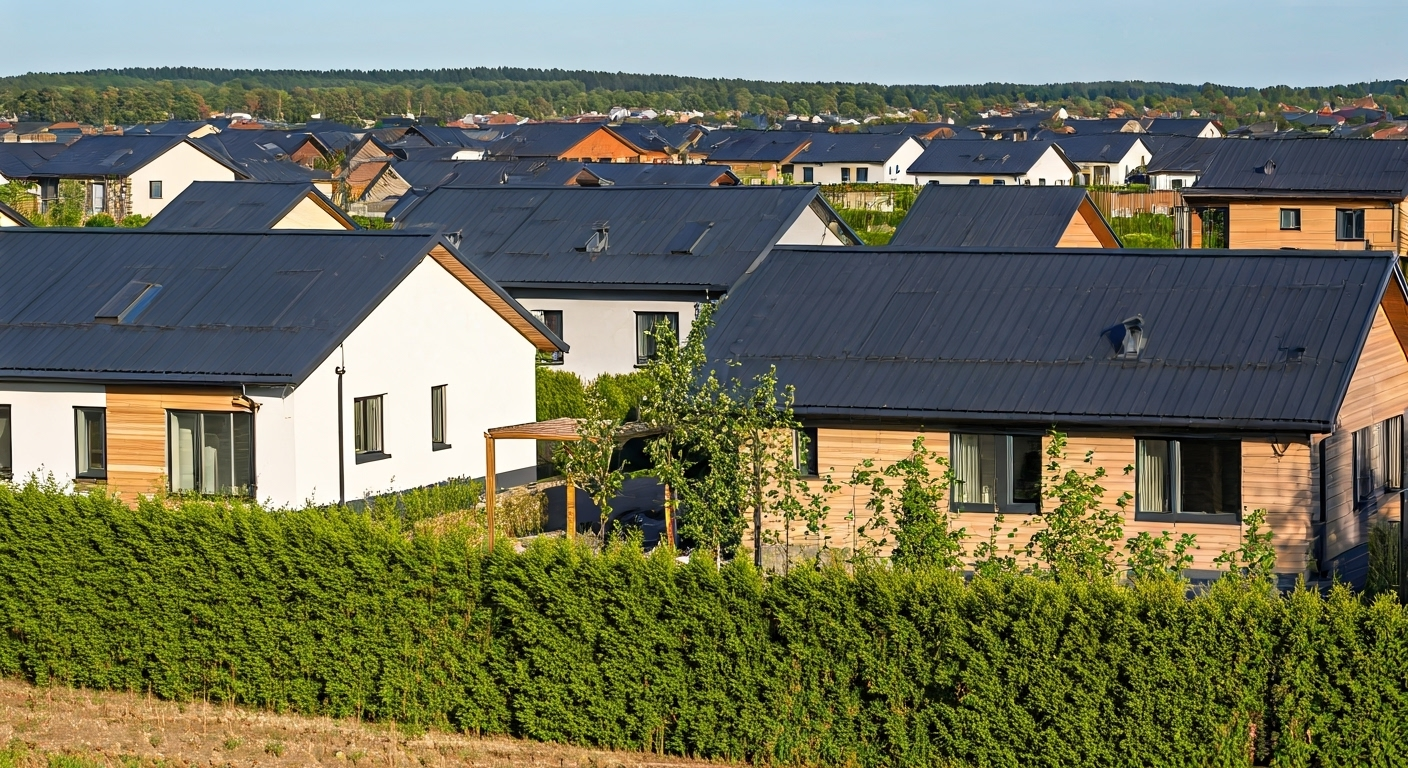
Key Highlights
- Metal roofing gained prominence during the 19th century, specifically through Thomas Jefferson’s initiatives and advancements in iron smelting techniques.
- The galvanization process introduced in the mid-19th century greatly enhanced the durability of metal sheets, making them a preferred roofing material.
- Originally limited to industrial and agricultural applications, metal roofs transitioned to residential adoption due to their low maintenance and fire-resistant properties.
- By the 20th century, metal roofs became a staple for industrial buildings, thanks to their longer lifespans and versatility.
- Recent years have witnessed metal roofing’s surge in popularity in the United States, largely driven by energy efficiency and solar energy innovations.
Introduction
Tracing the history of metal roofing sheds light on its enduring appeal and functionality. Metal roofs in the United States have evolved significantly from their early uses in architectural landmarks to becoming a favourite roofing material for homes and businesses. As technology advanced, metal roofs adapted to changing needs, offering durability, energy efficiency, and a variety of styles. Understanding this rich history of roofing material provides valuable insights into why metal roofing continues to be a popular choice for homeowners nationwide today.
The Early History of Metal Roofing in America

The 19th century marked the beginning of metal roofing’s journey in America, thanks largely to innovations in iron sheets and construction techniques. Thomas Jefferson popularised its use, recognising its durability and capacity to complement architectural elegance. The development of early metal roofs required skilled craftsmanship, signifying advancement in the roofing methods of the era.
Iron smelting became widespread during this period, facilitating the mass availability of metal for structural use. With innovators like Robert Morris and key technological strides, metal roofing began to emerge as a practical and reliable choice in construction, paving the way for modern adaptations.
First Instances and Initial Uses in the 19th Century
The first significant instances of metal roofs in the United States emerged in the 19th century. Copper and sheet iron quickly became essential materials due to their durability and practicality. One of the earliest prominent structures to feature metal roofing was the Christ Church in Philadelphia, showcasing copper roofs to create an enduring architectural symbol.
Copper roofs gained traction for their fire-resistant properties and minimal maintenance requirements. Early adopters appreciated the aesthetic appeal of metal roofs, which made them the preferred choice for many historical buildings such as Arch Street Meetinghouse in Pennsylvania. Sheet iron innovations also played a pivotal role in offering sturdier roofing solutions.
As the century progressed, galvanization transformed metal roofing. Zinc-coated iron sheets resisted rust, making them suitable for agricultural and industrial applications. These advancements revolutionised roofing materials, cementing metal roofs as the go-to option in various sectors, further enhancing their reputation for longevity.
Transition from Traditional Materials to Metal Roofs
During the Victorian era, traditional roofing materials like wooden shingles and clay tiles dominated American homes. Wooden shingles, while economical, were vulnerable to fire, pests, and environmental damage. In contrast, clay tiles were more resilient but expensive, limiting their accessibility.
The creation of metal sheets provided an alternative that blended affordability with durability. Sheet iron technological advances in both strength and span reduced installation time and opened new possibilities for roofing. Innovators like Robert Morris propelled this transition, advocating for lightweight materials that placed less stress on building frames.
The galvanisation process further bolstered this change. Coating metal sheets with zinc protected them from rust, mould, and insects, making them highly practical for roofing purposes. This transition captured attention across rural areas and affluent urban centres, forever changing the landscape of roofing in America.
Evolution of Metal Roofing Popularity in the 20th Century
The 20th century heralded significant growth in the popularity of metal roofing. Industrial buildings embraced metal panels for their low maintenance and long lifespans, setting the benchmark for durability. Metal roofing became synonymous with structural stability, meeting the needs of larger roofs and manufacturing facilities.
As residential construction advanced, homeowners began to realise the potential of metal roofs for withstanding environmental challenges. With innovations in coatings and frames, metal roofing proved to be a strong, dependable roofing material, making it an indispensable part of American architecture.
Post-War Innovation and Expansion
Post-war years brought groundbreaking advancements to metal roofing. The galvanisation process was refined to ensure greater protection for metal panels, resisting natural elements such as rust and corrosion. During this time, metal roofs gained traction, especially in commercial buildings where durability was crucial.
The rise of industrialisation after World War II saw metal panels being utilised for train sheds, factories, and warehouses. Their lightweight and versatile properties allowed builders to cover vast spans without compromising structural stability. Metal roofing’s reputation only strengthened further throughout urban areas.
In addition to upgrades in material strength, post-war innovations made installation easier and more time-efficient. These advancements encouraged residential adoption of metal roofing, with homeowners drawn to its aesthetic variety and practical benefits. The era marked metal roofing’s steady expansion into diverse markets across the United States.
Commercial and Residential Adoption Trends
Metal roofing systems became increasingly appealing for both commercial structures and homes beginning in the mid-20th century. Businesses opted for the material’s resilience against wear-and-tear, while families appreciated the energy efficiency and variety it offered over traditional asphalt shingles.
In residential areas, the lightweight nature of metal roofs allowed for easier installation, even directly over existing shingled roofs. Homeowners noticed a decrease in energy costs and a rise in structural integrity.
| Comparison Aspect | Metal Roofing Systems | Asphalt Shingles |
|---|---|---|
| Durability | Lasts up to 70 years | Short lifespan of 12-20 years |
| Maintenance | Low | High |
| Energy Efficiency | Reflects sun’s rays effectively | Absorbs heat |
| Install Costs | Higher upfront but lasts longer | Lower upfront but requires replacement often |
Modern-Day Surge in Popularity

In recent years, metal roofs have become an increasingly popular choice due to their energy efficiency and long-term savings potential. Homeowners are drawn to their ability to complement solar installations, further boosting sustainability efforts. Their durability and resistance to local climate challenges in states like Alabama also played a decisive role.
Enhanced designs make these roofs visually appealing as well, suiting a variety of architectural styles. Metal roofs have emerged as a versatile and cost-effective solution for eco-conscious homeowners in the United States.
Advances in Metal Roofing Technology
Technological progress has propelled metal roofing into the modern age. Standing seam roofs now offer sleek aesthetics while improving water and wind resistance. In addition, stainless steel and copper roof shingles have gained popularity for their durability and ability to withstand corrosion.
Modern metal frames are lighter without sacrificing strength. This innovation reduces stress on structures while allowing homeowners and builders to install unique designs easily. Advances in coating techniques further heighten protection against harsh weather.
Roofing systems today benefit from continuous improvements in technology, ensuring longer lifespans and adaptability. From solar panel integration to rust-proof coatings, metal roofs are leading the charge into a new era of architectural sophistication.
Growing Appeal for Homeowners in the United States
Many homeowners in the United States are opting for metal roofing, appreciating its unique combination of practicality and style. Its lower energy costs and resistance to weather extremes have made it an attractive choice for countless families.
- Metal roofs last decades longer than traditional materials like asphalt shingles.
- They provide excellent energy efficiency, reducing utility costs significantly.
- Variety in materials offers the flexibility to match any home aesthetic.
- Their low cost over time makes them an ideal material for long-term savings.
This growing appeal signals a shift towards sustainable and functional roofing solutions across various housing markets nationwide.
Conclusion
In conclusion, the journey of metal roofs in America reflects their remarkable adaptability and enduring appeal. From their early adoption in the 19th century to the modern surge in popularity driven by technological advancements, metal roofs have become a favored choice among homeowners for their durability and aesthetic appeal. As you consider roofing options for your home, remember that investing in a metal roof not only adds value but also enhances your property’s resilience against the elements. If you’re ready to explore the benefits of metal roofing, contact us at Metal Roof Mobile AL for a free consultation. We are dedicated to providing top-notch service and ensuring your home is protected with quality craftsmanship.
Frequently Asked Questions
How long does a metal roof typically last in Alabama?
A metal roof typically lasts 40 to 70 years in Alabama, depending on installation quality and materials used. With its low maintenance needs and ability to resist harsh weather conditions, it far outlasts asphalt roofs, making it a durable roofing material option in the United States.
What are the main advantages of choosing a metal roof?
Choosing metal roofing offers significant benefits, including energy efficiency, lower long-term costs, and resistance to fire, pests, and extreme weather. Its durability and variety of styles make it a popular choice among homeowners seeking reliable, cost-effective roofing solutions.
